Back in September of last year, we discussed a building toy company named CADA Bricks, located in China. Currently, the company offers a good selection of Technic-type sets, standard brick-built vehicles, and military vehicles. At that time, I only had exposure to one of their smaller sets, and I was impressed by the surprisingly good quality of building elements, instructions, and packaging. In fact, I couldn’t tell the difference between LEGO elements and CADA elements. Everything was the correct color, shine, feel, and clutch-power. You can read my full review of the CADA brick separator and their small Suzuki Jimmy Off-Road vehicle here: CADA Brick Separator for Technic Builders & More!
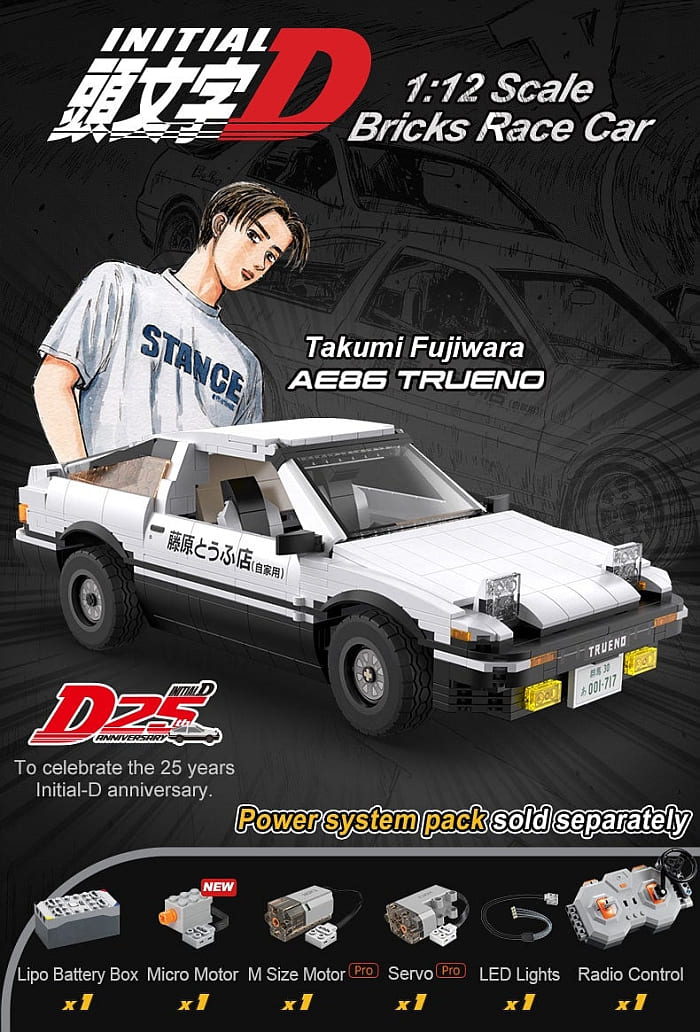
Since then, I built one of the larger CADA models; the Takumi Fujiwara’s Toyota Sprinter Trueno GT-APEX (AE86) from Initial D, a popular Japanese street racing manga series. Takumi is a teen working as a gas station attendant, and he is also involved in illegal Japanese street racing with his friends. The car was originally purchased by his dad, who used it as a delivery vehicle for his tofu shop.
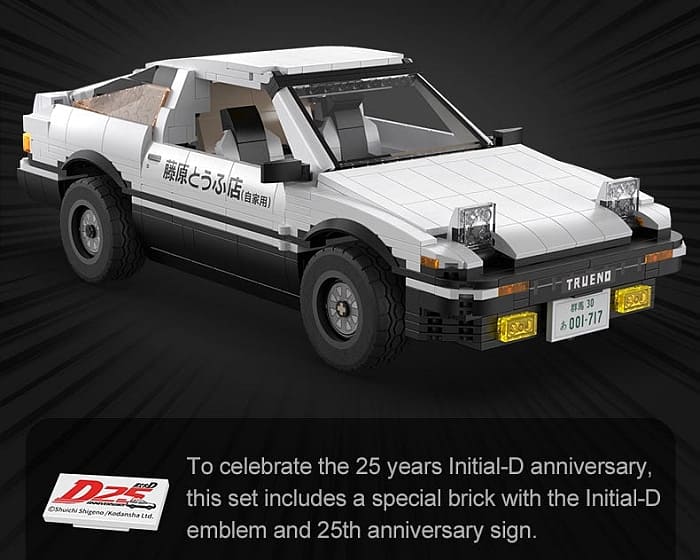
The CADA model of the vehicle is doubly licensed by Toyota and the Initial D franchise. It’s a 1:12.5 scale detailed replica of the car in two versions; classic and racecar. The 1,324-piece set is similar to the large LEGO Creator Expert vehicles combining the strength and functionality of LEGO Technic, with the refined shapes and extensive parts selection of the standard LEGO building system. The vehicle features steering linkage, flip-up lights, rear shocks, opening doors, opening hood, opening trunk, and an Initial D 25th anniversary brick for $100.
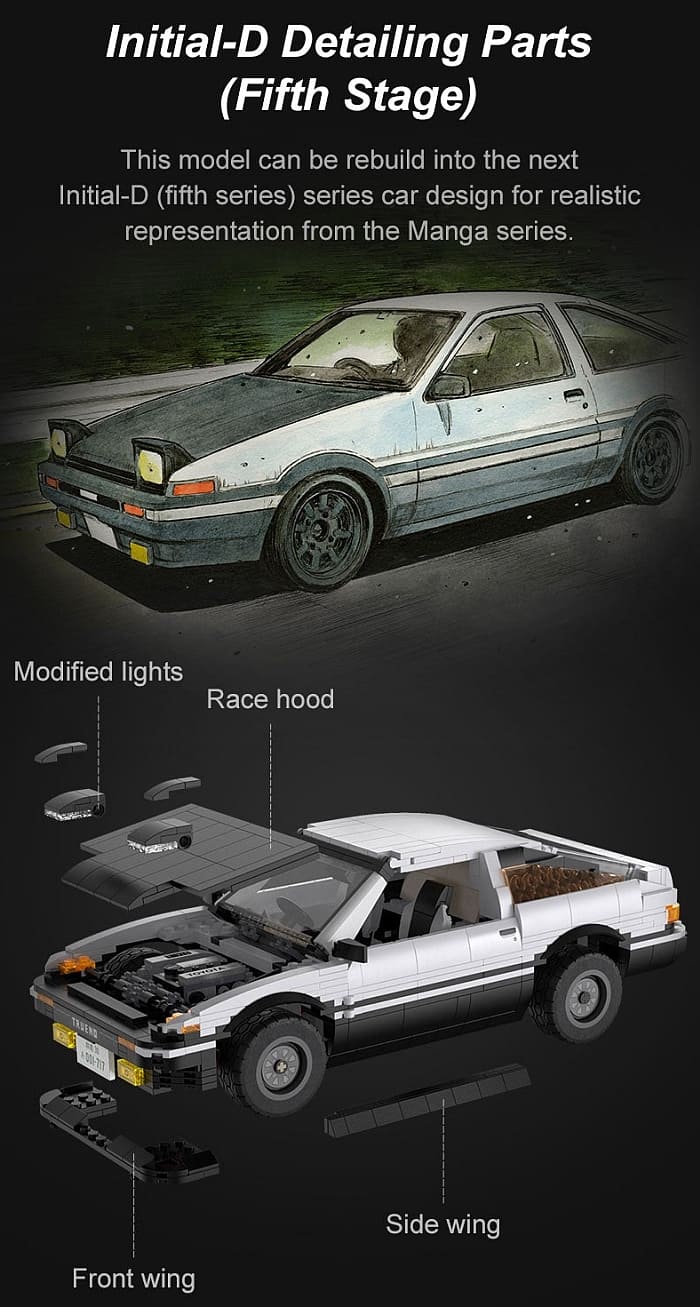
There is also an optional upgrade to a motorized version of the vehicle including a micro motor, M size motor, servo motor, LED lights, rechargeable battery box, and remote control. This upgraded version costs $160. I was particularly interested in this set because I was curious about the quality and functions of the powered elements by CADA. As mentioned above, I was pleasantly surprised by the quality of their basic pieces, so I was hoping that their powered elements will be up to LEGO’s quality as well.
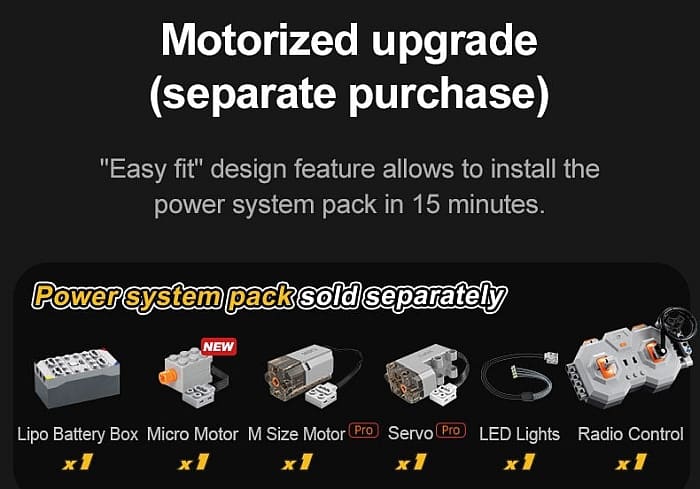
The packaging of the set is gorgeous! It’s sturdy cardboard with beautiful artwork at the front, back, and sides. Inside, the outer box, there are two inner boxes with more lovely illustrations. I normally don’t keep set boxes, but this one is definitely going to be an exception!
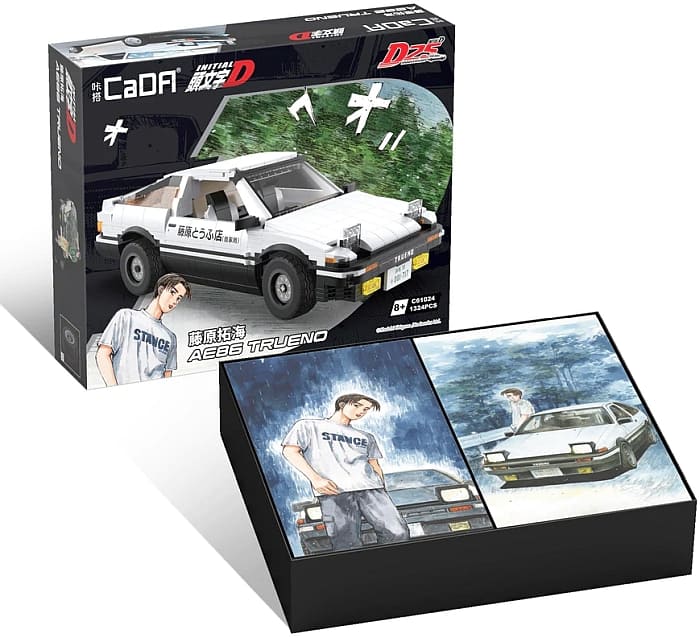
The two instruction books are also high quality with more Initial D artwork and detailed building instructions in vibrant colors. The bags with the parts are numbered, so you don’t have to open all of them at once. And there is also a sticker sheet.
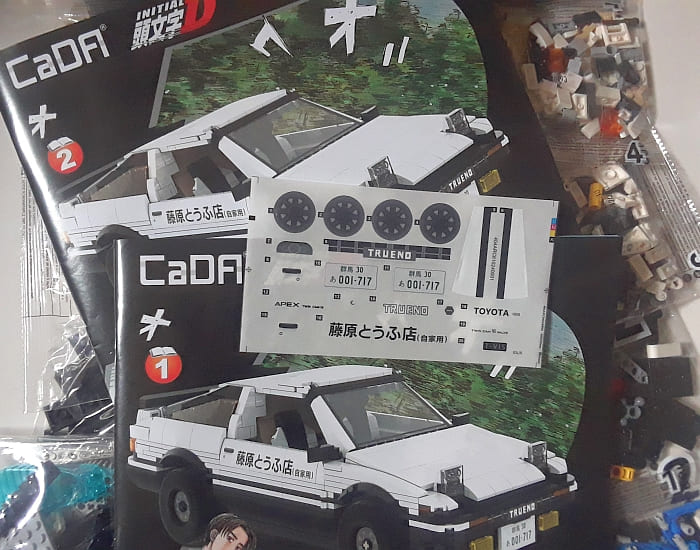

This is a large and detailed model, so it took me a few evenings to assemble it. The experience of building it was very similar to building one of the LEGO Creator Expert vehicles. I had zero issues with any of the pieces. They have consistent clutch-power, color consistency, and are just like LEGO bricks in every way. Even the transparent pieces are crystal clear, which is rare amongst Chinese brands.

The final model is impressive and looks good from every angle. I was especially impressed by the play functions, like the front steering and flip-up headlights. The rear shocks are an especially interesting building experience. The doors, hood, and trunk can all be opened (there are a couple of crates of tofu in the trunk, which is a nice touch), and the seats are adjustable.
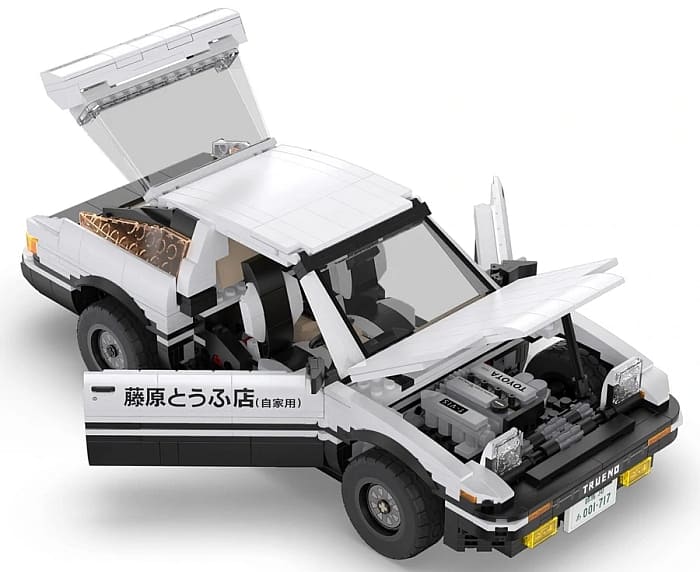
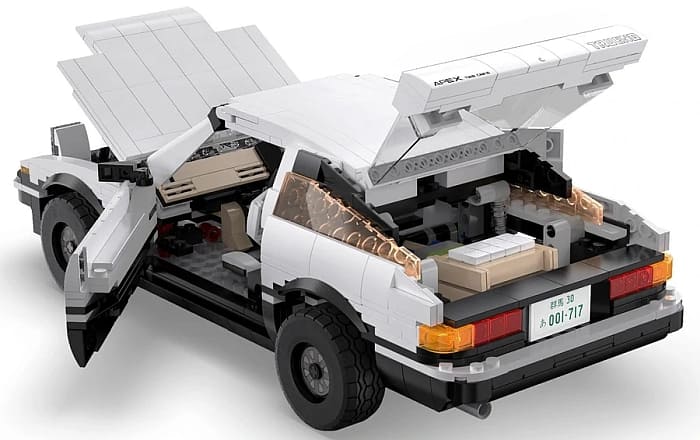
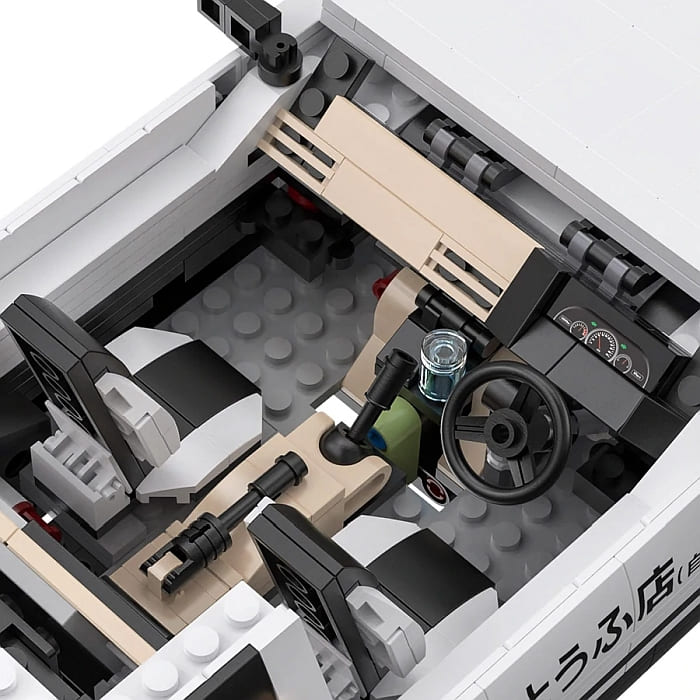
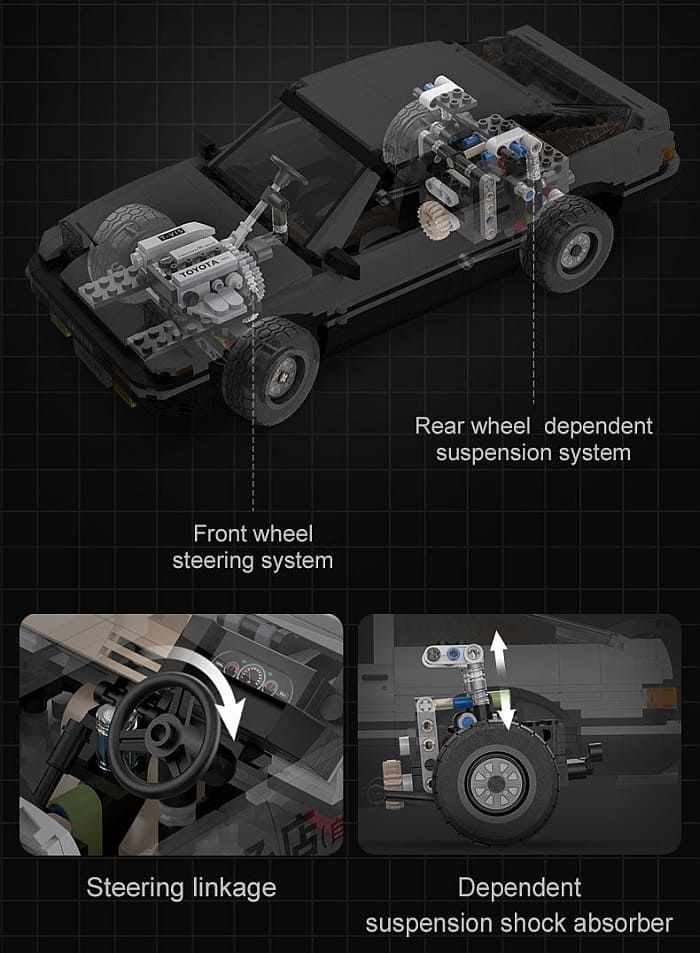
There are also additional pieces to upgrade the vehicle with a black racing hood, front and side wings, and modified lights.

I really have nothing negative to say about this set. Everything looks good and functions well, and besides a few finicky steps, which is common in an advanced model like this, I haven’t run into any problems while building it. It was a thoroughly enjoyable experience. Perhaps the only thing I would change is that I feel that the windshields would look better with a blackish tint.
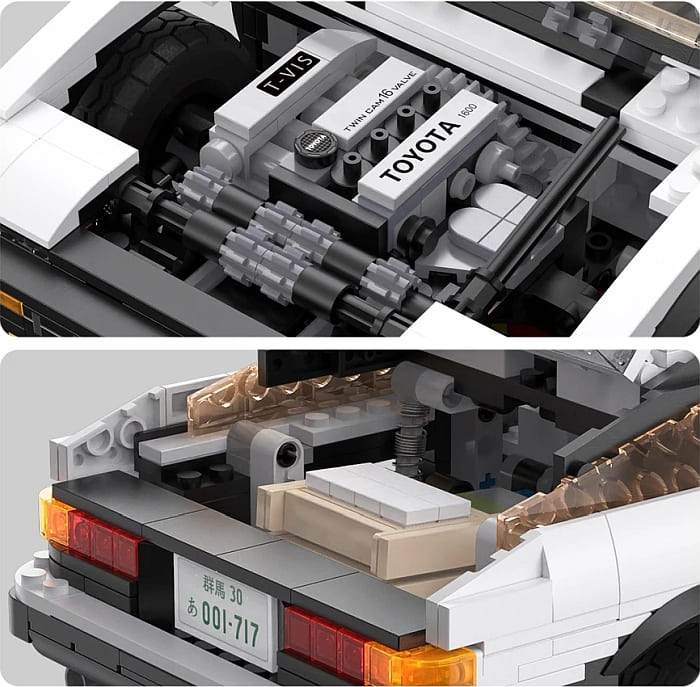
Once you finish building the vehicle, you can display it, or use it for play. And if you purchase the motorized version, this is the time to take care of that upgrade. The second instruction booklet dedicates 42 pages to walk you through the steps. First, you familiarize yourself with the powered elements. I was pleasantly surprised that the set comes with a rechargeable battery box. The remote control is battery charged and is similar to LEGO’s own remote. You also get an M-size motor, servo motor, a micro motor, and a cluster of LED lights. Everything is plug-and-play and works like in the original LEGO Power Functions system.

To install the powered elements, you need to create some room for them in the vehicle by removing some sections; the tofu crates, the back seat, the console between the front seats, the engine block, and a couple of other odds and ends. This is easy to do, as they were all designed to be removable in one chunk.

The CADA website states that it should take 15 minutes to install the power system pack, but it definitely took me longer than that. The motors and battery box are easy to install, but running the wires neatly takes quite a bit of pushing, folding, and tugging. This is especially true for the thin wires of the lights. I didn’t fin the experience frustrating though, mainly because it was so interesting. But I would imagine that someone with bigger hands might experience some frustrating moments. Still, it’s so satisfying to turn on the battery box and remote at the end, and everything just works! Below, I have included a video-review of the set, so you can see the play-features and functions in action.
This is an amazing set overall, especially if you add the motorization package. Getting high-quality components for motorization is challenging as LEGO abandoned the original Power Functions system in favor of the app-controlled Powered Up system. I personally prefer the simplicity of infrared-operated remotes, and this set proves that you can achieve quite a bit of functionality with the traditional system. I especially appreciate the rechargeable battery box, the micro motor, and the tiny LED lights. And all of this is just a $60 upgrade! (By the way, you can also purchase some of the powered components as a package or separately from CADA.)
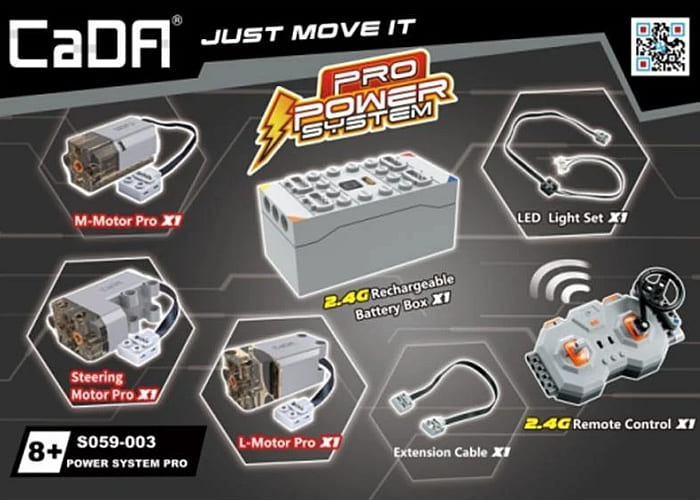
I hope you find this review helpful. If you have any questions, or if you would like to share your own experiences with the CADA brand, feel free to share in the comment section below.
And you might also like to check out the following related post:












Hmm, I think I have the Hong Kong live action adaptation of the manga on some old DVD somewhere, although I haven’t read much of the original series.
Could we hope for a similar set with French racing hero Michel Vaillant? =D
https://en.wikipedia.org/wiki/Michel_Vaillant
Thanks for the great review. Those electronic parts look VERY tempting…..
That rechargeable battery alone is worth the price! This looks like a great set. Thanks for the detailed review.
You can check more of our sets on our website: doubleeagle-group.com
My brain is surprisingly upset at the lack of Lego stamps on the studs. I guess I’ve come to interpret that as greebling, the bricks just look naked without it.
The studs have CADA moulded into them, so they resemble LEGO bricks quite closely. They aren’t “naked” like some other brands. 🙂
I can’t see it at all in your interior cabin photo, but now that you say it I do kind of see it in their promo photos.
Yeah, some of those images are renders with no print on the studs, while others are photos where you can see the print. 🙂
How is the white color? Is that the same as Lego white?
All the colors are identical to LEGO. At least the ones I had a chance to build with. And yes, white matches perfectly.
The packaging looks amazing. And I’m very intrigued by the power functions parts.
Dang, this is sweet!
Is it known who is the designer?
I asked about this, and I was told that it was one of their most talented designers, but I wasn’t given a specific name.
The set was build by Yang Xiang, CaDA Bricks R&D team supervisor.